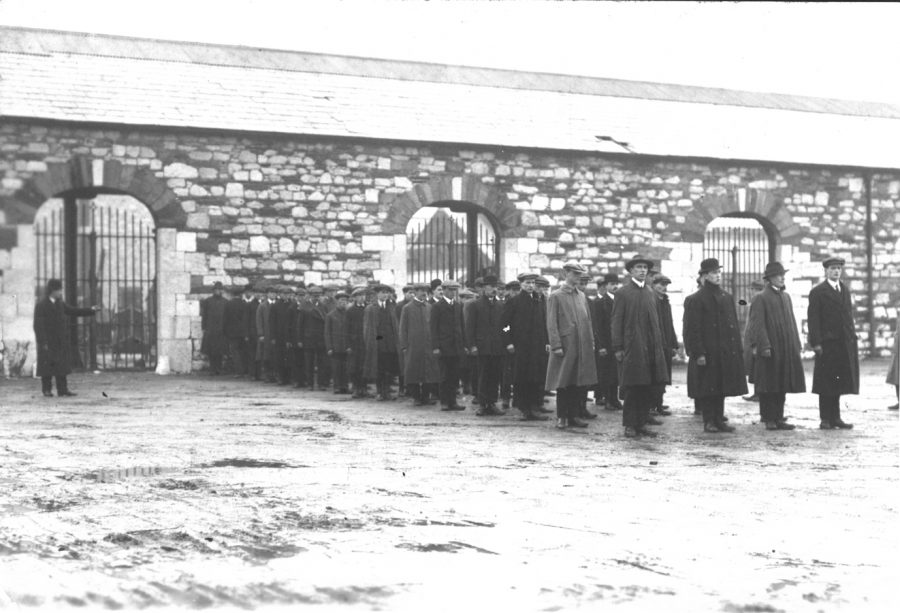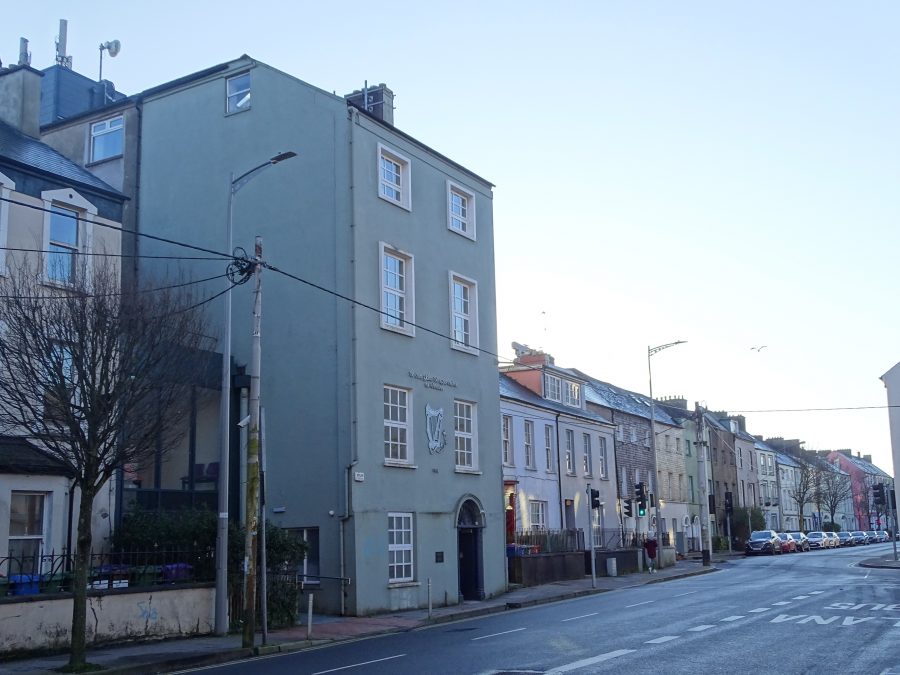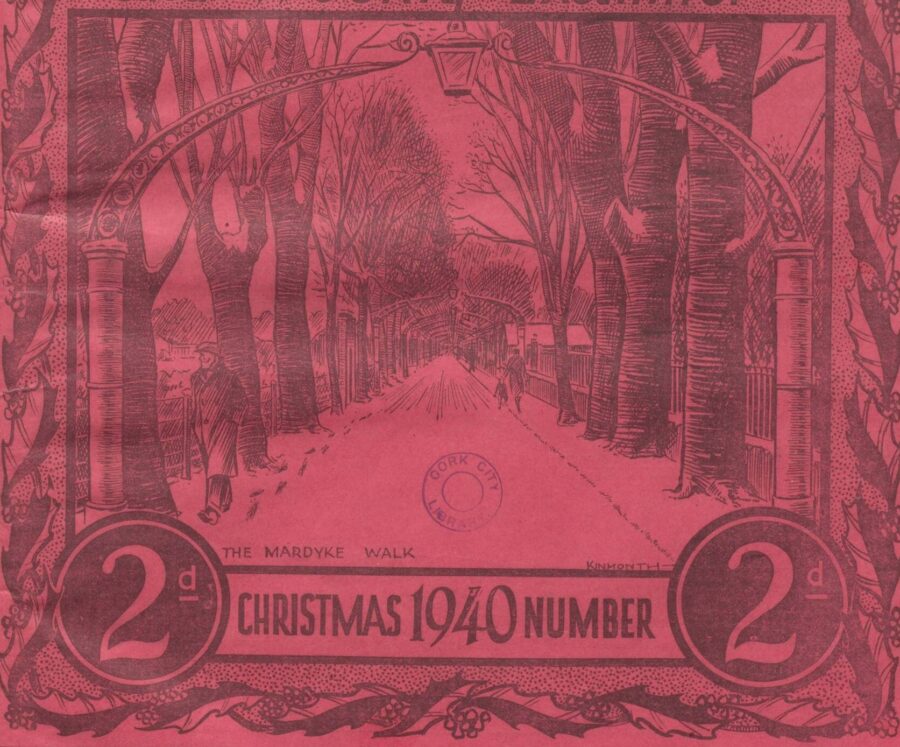
Trail Begins at Fitzgerald’s Park.
Below is a brief historical walking trail, which covers some of the topics on my physical walking tour. The information is abstracted from various articles from my Our City, Our Town column in the Cork Independent, 1999-present day, Cork Independent Our City, Our Town Articles | Cork Heritage
Introduction:
An impressive historical quadrant of the city, the Mardyke Walk area showcases the best of not only eighteenth century Cork, but also the architectural splendour of buildings from the nineteenth century and twentieth century on the Dyke Parade. Splice in stories such as the Cork International Exhibition, Cumann na mBan, old distillery buildings, an international electronics laboratory, the scultptures of Fitzgerald’s Park and they all add up to a strong sense of history and identity, and a fab place to get lost in and explore.
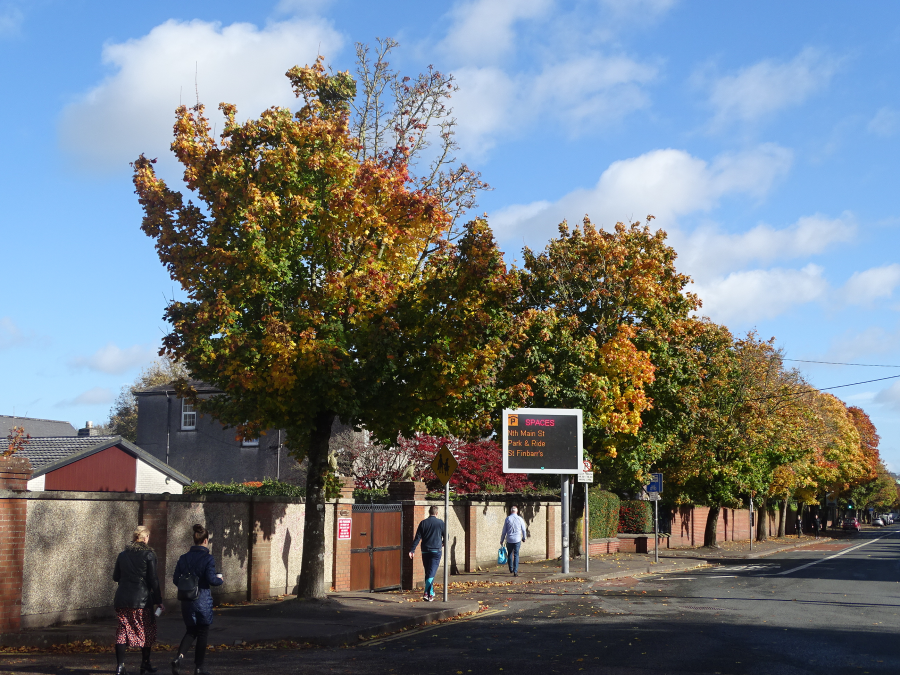
The Mardyke:
Between 1720 and 1730, the area around the Mardyke was marshland and known generally as the Western marshes. However, in 1719, a large section of land was bought by the town clerk Edward Webber who decided to build and engineer a raised walkway – of approx a mile in length – across the marshes as the step to reclaiming them. Edward Webber, himself was a descendant of a Dutch merchant. Consequently, he named his raised walkway after a promenade in Amsterdam called the ‘Meer-Dyke’, which means an embankment to protect the land from the sea.
In addition to constructing the walk, Webber also built a tea house of red bricks which was the first of its kind in Cork. Fruit gardens and pathways of gravel were put down along with stone seats for the convenience of the public. The publicity of Webber’s tea house grew and soon it became a place, which people of high social status met. After the death of Edward in 1735, his tea house and gardens continued to prosper for over two centuries but eventually closed in the mid 1940s.
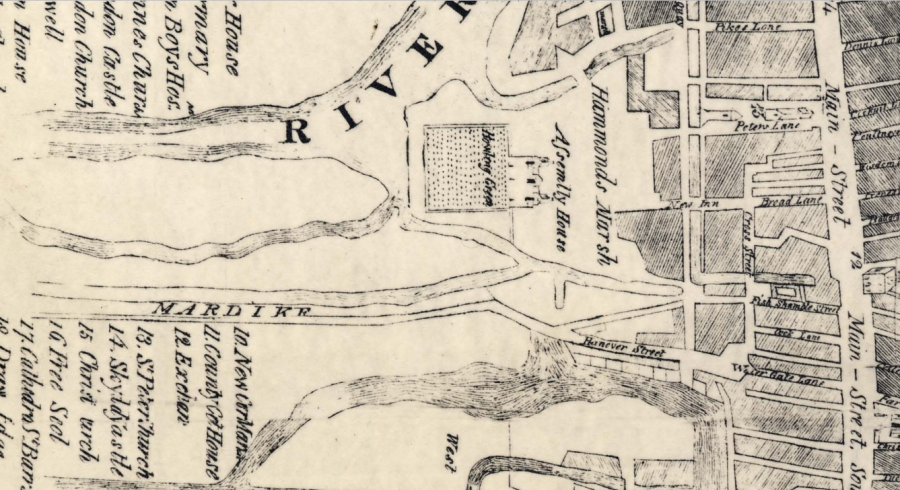

Between 1795 and 1850, the gardens and tea house were used as a summer residence for the Lord Mayor of Cork. At one stage people were employed to build an elegant pond and to take care of his grounds.
The early nineteenth century coincided with continued reclamation of the western marshes as with the construction of the Western Road in the 1830s. All such work opened this area to the general public more to walk and explore.
The renewed interest by the public led the Corporation to make the promenade more attractive by erecting a slate covered bandstand, benches, trees, ornate lamp posts and gates that were locked in the evening and which were manned by the Corporation of Cork’s Mardyke Constables.
John Windle in his 1840s “Historical and Descriptive Notices of the City of Cork and its Vicinity describes the Mardyke;
“The Mardyke runs due west of Mardyke Place, which adjoins Nile-Street. It is a delightful walk about a mile in length, and shaded with ranges of noble elms at either side, forming a long vista in one straight line, from beginning to end. It was formed in 1720, by Mr. Edward Webber, the then Town Clerk, and was called ” The Red House Walk,” from a red brick house situated somewhere adjacent, enclosed within a ” tea garden.” On the Dyke, stone seats had been placed at intervals for the convenience of the public…. Sir Samuel Rowland , one of the Mayors of Cork, bestowed unusual attention on this walk, and had it kept in excellent order”.
“In 1807, the then Mayor caused a metal gate to be put to it at the City side, the inscription on which is curiously given in the conclusion of an ” ode,” celebrating the public spirit of its erector. ” Here future shoemakers shall read on Sunday, When our good Mayor shall be in Heaven, As bird catching they’re going, “JOHN DAY, ” Esquire, Mayor, 1807.”


About 1845, the house which is presently the Cork Public Museum was built by a prominent Cork family, the Beamishes. This family as well as William Crawford are also responsible for the setting up of Cork’s most famous distillery, Beamish and Crawford alot earlier in 1772. In 1867, the nuns of the Bons Secours (Sisters of Good Help) moved from their small overpopulated house on the Dyke parade and occupied the Beamish house. In those days, the majority of ill people were looked after in their homes or on the street as hospital care was very rare.
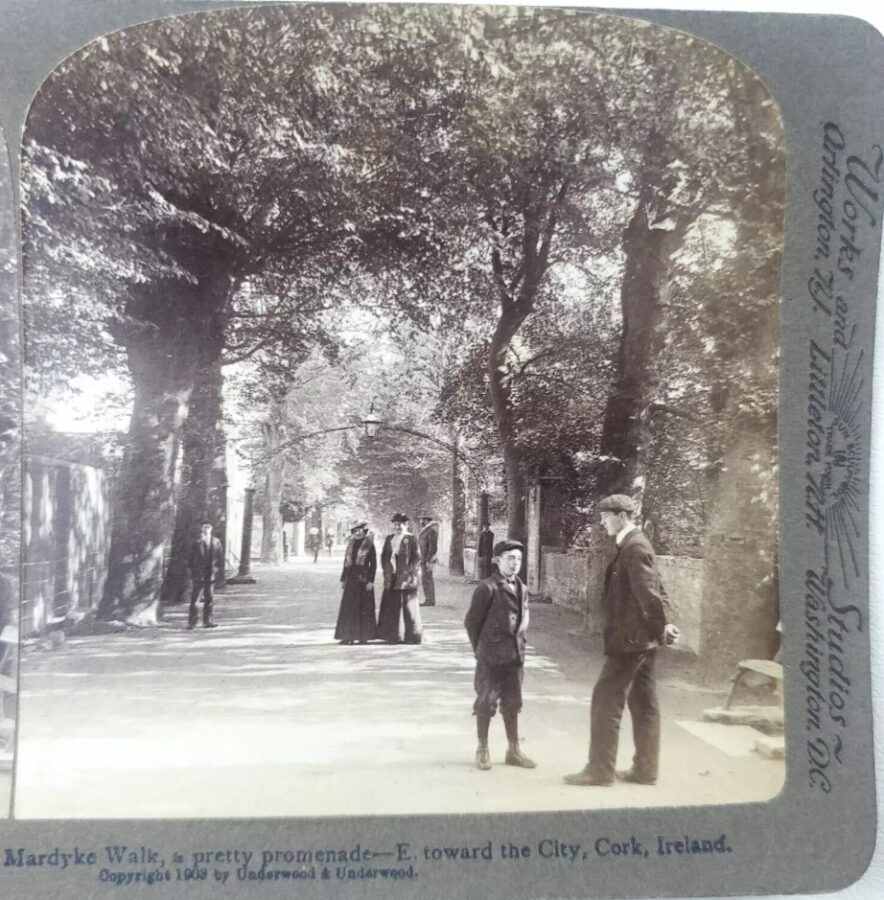
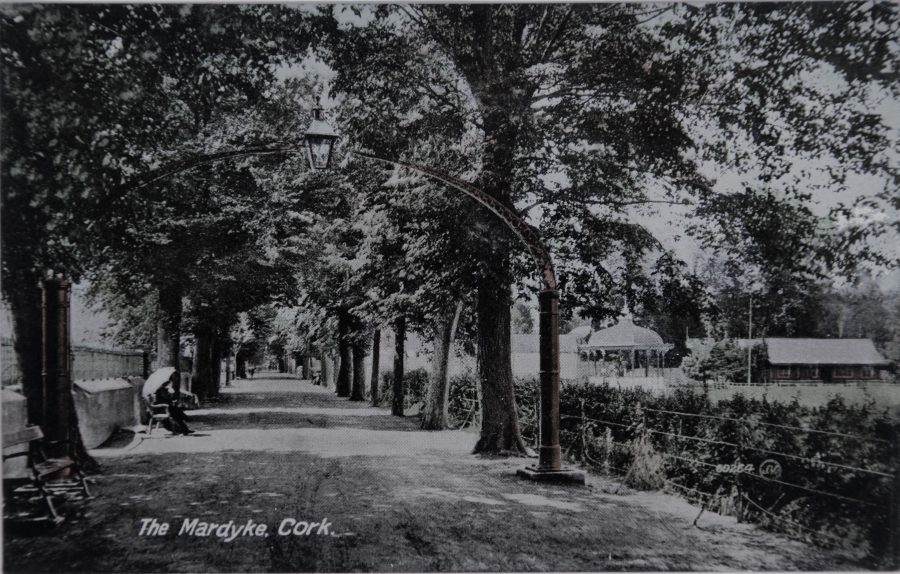
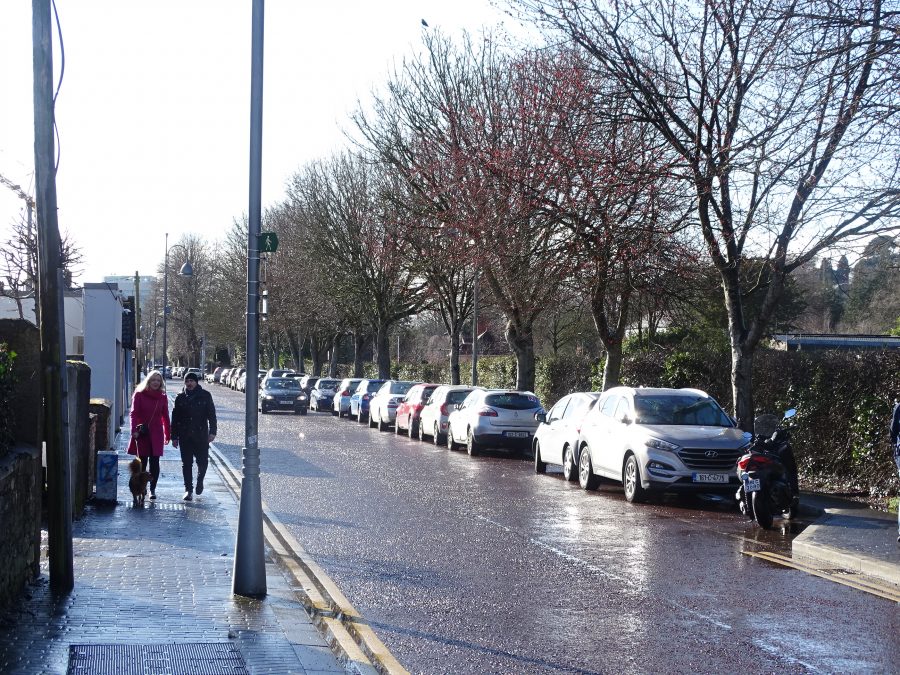

Cork International Exhibition & Fitzgerald’s Park:
From May to November 1902, Cork City played host to one of the most significant events in its entire history – the International Exhibition of Manufactures, Arts, Products and Industries. It spanned a 44-acre site not far from the city centre encompassing an area on the Mardyke that now includes the Cork Cricket Club, the Sunday’s Well Boating and Tennis Club, Fitzgerald Park, and the University’s Mardyke Sports Arena.
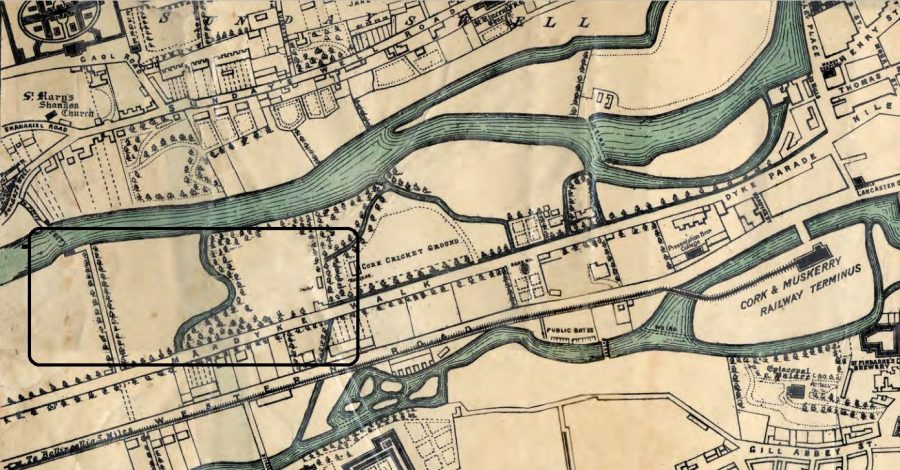
The exhibition grounds were elaborately laid out and had several large exhibiting halls and pavilions as well as an assortment of smaller buildings including tea houses, restaurants and kiosks. Irish and foreign exhibitors, some from ‘exotic’ locations such as China, Russia, and Turkey, filled these halls and pavilions with exhibits and demonstrations for all to see. The exhibition was visited by over a million people.
At the end of the Cork International Exhibition in 1903 in the Mardyke, the organisers wished to give the grounds to the people of Cork as a place of recreation. A decision was taken to name the new public space after Edward Fitzgerald, the organiser of the Exhibition and Lord Mayor of Cork from 1901 to 1903. A general Park Committee was agreed upon and established by the Exhibition committee.
In March 1906, it was agreed to vest the Park and the Shrubberies House in the Corporation of Cork and Fitzgerald’s Park was born. Check out Cork City Museum, the former Exhibition Shrubberies House and also the park is the City’s official sculpture collection, home to a large collection in particular of Cork sculptor, Seamus Murphy.
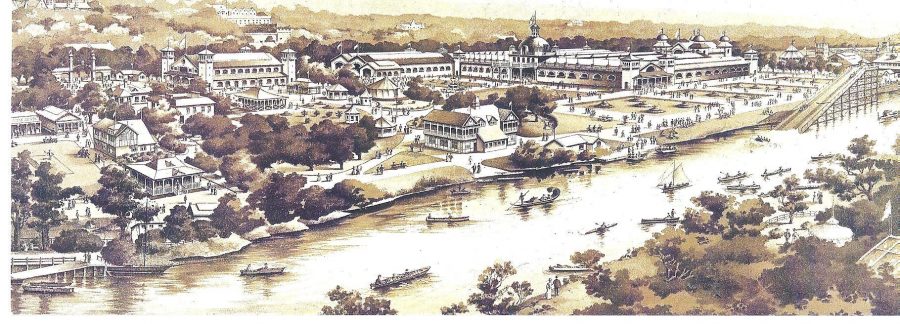
Daly’s Bridge:
Built in 1927, Daly’s Bridge spans a section of the river which is surrounded by greenery. One has Fitzgerald’s Park on the south side and several landscaped gardens on the north side. Prior to 1926, it had been suggested many times that a footbridge should be built in the locality in order to enhance the area. It was therefore decided by the Corporation to go halves on building a bridge with a Mr James Daly who was a butter merchant in the city.
A decision was made to construct a suspension bridge which would be supported at intervals across the river with the aid of anchored cables. A pedestrian walkway consisting of timber planks was also constructed. The building contract was awarded to a London based steel company owned by a Mr David Rowell. Another major feature of Daly’s Bridge is its nickname. It is more commonly known as the “Shaky” Bridge. It attained the name due to the fact that a large number of people used the bridge to go to and from Gaelic matches in the Mardyke. Consequently the bridge would shake with the masses of people walking across it.
For a more detailed history, click here on this history trail: History Trail, Daly’s Bridge AKA Shakey Bridge | Cork Heritage

Sacred Heart Church:
The Society of the Missionaries of the Sacred Heart (MSC) is an international community of religious priests and brothers. The Cork Examiner records the dedication ceremony of the beautiful Sacred Heart Church on 12 June 1931 and the beautiful architecture designed by Cork architect Dominic O’Connor and built by John Sisk and Sons of Cork’s Cove Street:
“The public were then admitted, and no few, who taw the interior of this newly erected edifice for the first time, were forcibly struck -with its graceful, quiet, and wholly reverent lines of architecture.
The fine arched roof of the centre aisle, simply, yet impressively finished with decorative mouldings; the continuation of that design in the series of arches dividing the centre from the aisles, on either side the splendid impression of everything in well thought out proportion, the degree of space allotted to the sanctuary, and, not the least of these excellent features, the adequate lighting that is mostly obtained from domed roof lights, all tend to convey the idea of thoroughness, with which the architect, Mr Dominic O’Connor prepared his plans.
The high altar, set well back and flooded with soft light from the roof, looks exceedingly well, its large panels of green marble, and its generally graceful design, making it, as it is intended to be, the centre-piece to which the attention of the worshipper is immediately attracted”.
The online Dictionary of Irish Architects records that Dominic O’Connor was born in Cork in 1878. He attended secondary school at Clongowes Wood College and in 1897 became an engineering student at Queen’s College, Cork. He graduated with the BA and BE degrees in 1901.
In December 1901 Dominic registered as a probationer of the Royal Institute of British Architects and became a pupil of the London architect William Henry Harrison. He attended classes at the London Architectural Association
From
1903 to 1905 Dominic was articled to Edward Goldie with whom he remained as an
assistant. He also travelled in France. He then appears to have worked in the
office of George Patrick Sheridan in Dublin,
By 1909 Dominic had established his own practice
at 87 South Mall Cork. By the autumn of 1919 he had entered into partnership
with Bartholomew O’Flynn at 60 South Mall. The
partnership was dissolved in November 1927, when O’Connor moved to a new office
at 29 South Mall. His work, as recorded in the Irish Builder, was largely for the Catholic clergy and
religious orders in Counties Cork and Kerry. Apart from Sacred Heart Church,
his other notable project was St Augustine’s Church on Cork’s Washington Street,
built in the early 1940s. Dominic maintained an office in Cork up the early
1960s.
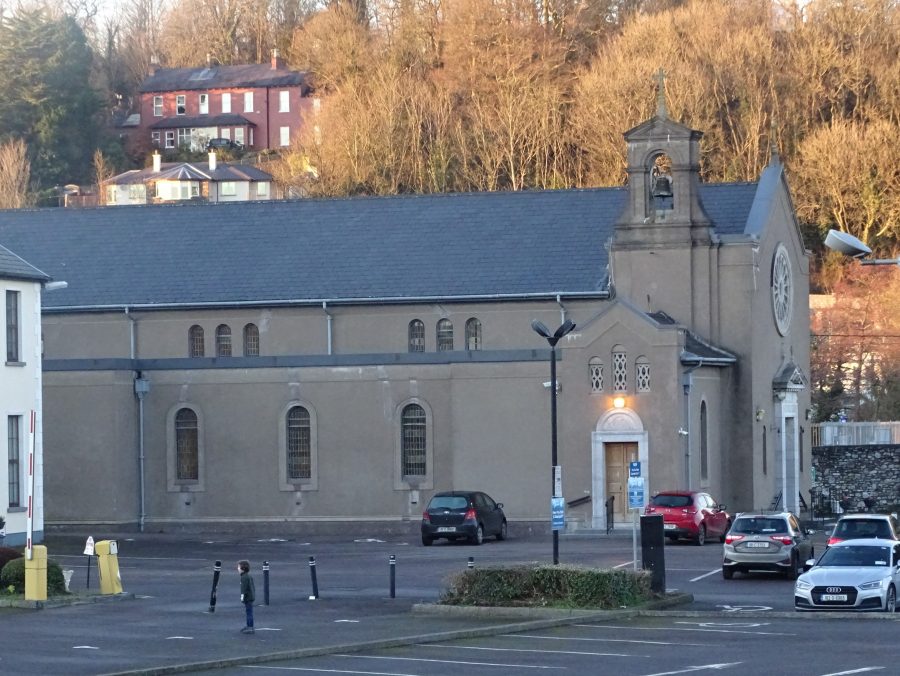
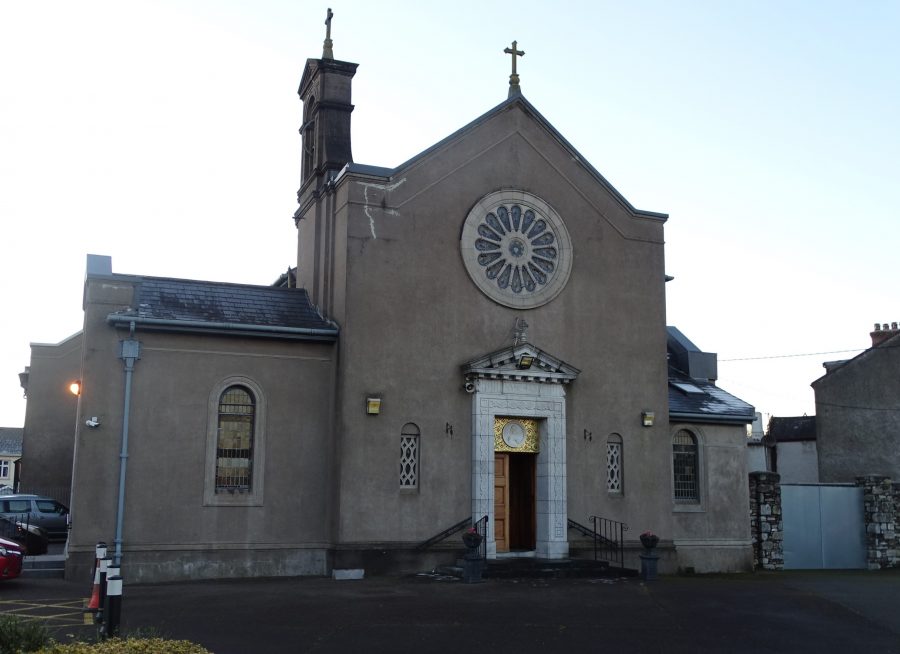
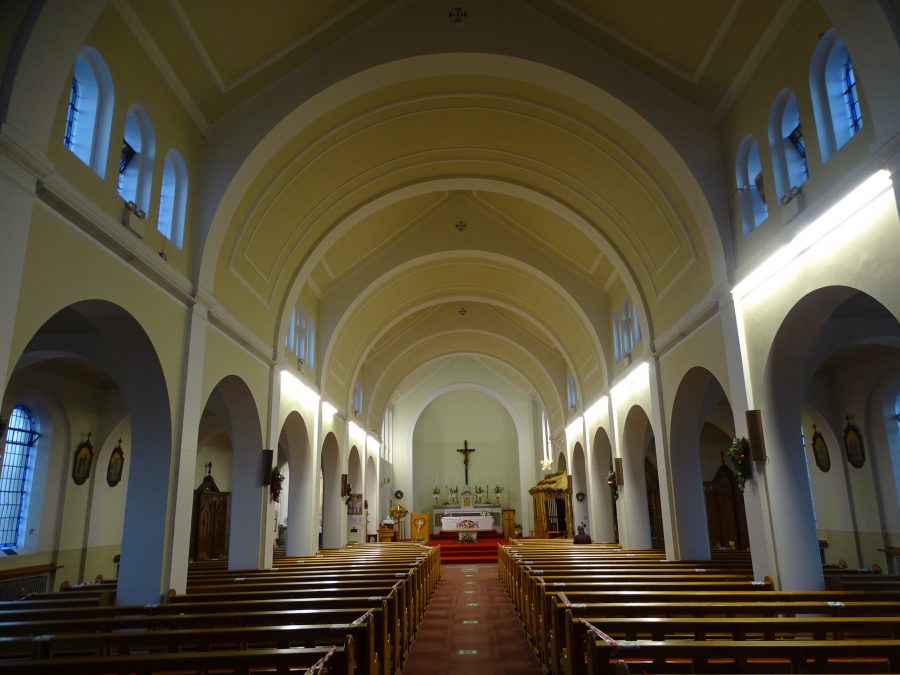
A Municipal Sculpture Park, Fitzgerald’s Park:
Circa the mid-1960s, a Cork Sculpture Park Committee was established to create one in Fitzgerald’s Park. Professor Aloys Fleischman was the Committee’s Chairman. Seamus Murphy’s bronze bust of Michael Collins was one of the first of series of sculptures by the artist to be unveiled in the park’s landscape on 15 June 1966.
In November 1977, Seamus Murphy’s Dreamline was an over life-size study of the head of the Madonna, carved in Portland stone, was completed by Seamus Murphy, in 1932, when he was 25 years of age. It was first exhibited in 1934 in Cork. Later it was shown, among other places at the Royal Hibernian Academy in Dublin. The work of work such as Marshall C Hutson and Joseph Higgins can also be viewed in the park. In 2016 a Seamus Murphy bronze cast of Eamonn DeValera was donated to Cork City Council and erected on a pedestal in the park. The installation of the sculptures in the park through time also inspired the situating of sculptures in other parts of the city.
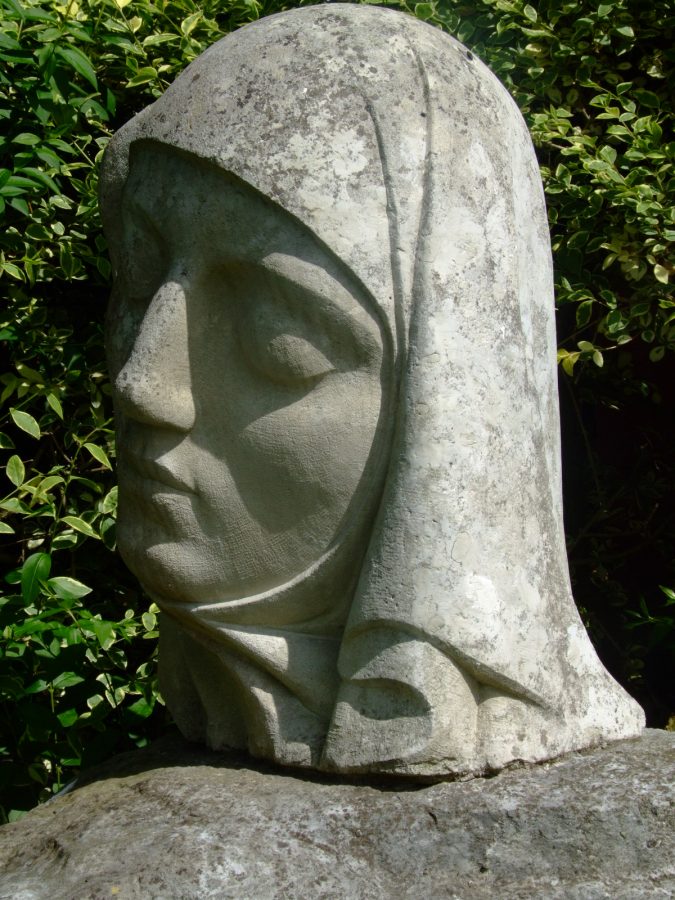
Sunday’s Well Boating and Tennis Club:
Sunday’s Well Boating and Tennis Club was founded in 1899, shortly after a successful July “Sunday’s Well Regatta and Water Carnival” had been held on the Lee. The Club was formed by some of the regatta committee organisers, who were boating and tennis enthusiasts from the locality. The committee then leased a plot of ground off the Mardyke Walk alongside the river and that is the ground which the Club occupies today. As a club, Sunday’s Well is fortunate in that it can boast of having a comprehensive range of annals dating from its foundation right up to present times. It was uniquely linked with the Cork International Exhibition of 1902/03, principally because it lent its grounds to the Exhibition, and the present clubhouse was built by the Exhibition Committee for visiting dignitaries, which included King Edward VII and Queen Alexandra.
In 1904, the Club took possession of the clubhouse. Sunday’s Well had, in addition to its magnificent new clubhouse, five excellently laid out and perfectly manicured grass courts. These set in peaceful and beautiful surroundings thus became the pride of the country. Throughout the summer, the courts were constantly used from morning to night, except on band promenade days, which were held regularly during the summer months in front of the clubhouse.
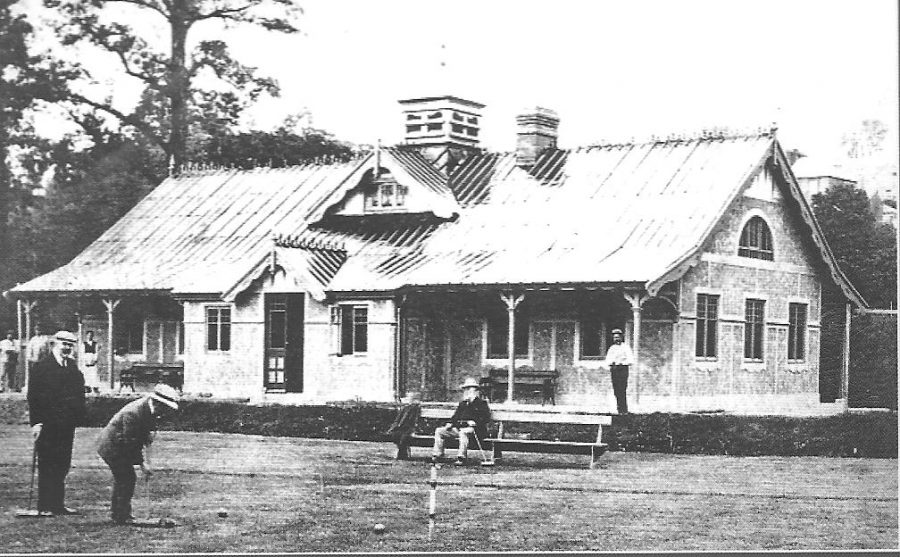
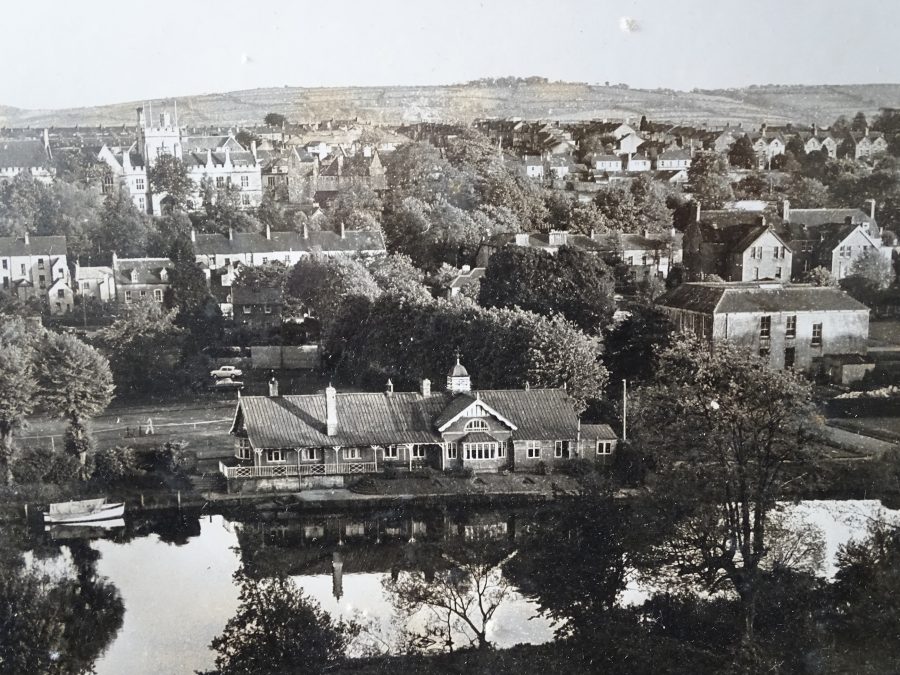

Sunday’s Well Boating & Tennis Club – Best of 2019-2020:
Cork Cricket Club:
Founded in 1849 as the Cork Cricket Club, the County was added to it in 1874. In its 140-year history, the Mardyke has hosted 13 international fixtures, the first in 1902 against a London County team featuring WG Grace, Australian captain, Bill Murdoch and future England Captain, JHT Douglas, and the most recent in 2002 against an MCC side over three days. Test players such as Graham Gouch, Nasir Hussain, Peter Such, Derek Pringle and John Stephenson have all graced the Mardyke over recent decades.
One of the significant changes to club teams was during World War I. Touring teams did not come but there was plenty of cricketing activity as there were large numbers of naval and military personnel based in the area. In 1922 when Ireland became Independent the military departed and the club became more dependent on local leagues, annual inter-provincials against Leinster and visits from teams such as Trinity College and Na Shulers (an Irish Touring Club).

Slí Cumann na mBan:
The new 2 million euro Mardyke Riverside Walkway (as part of the overall ‘Banks of the Lee’ walkway) was officially opened on 1 February 2006 by the Lord Mayor of Cork, Cllr. Deirdre Clune. The walkway was renamed on 17 April 2006 to the Slí Chumann na mBan on the occasion of the 90th anniversary of the Easter Rising 1916
Peg Duggan in her witness statement in the Bureau of Military History (WS1576) recalls that in 1913, when the Cumann na mBan was established in Cork, the inaugural meeting was held in a hall known as An Dún, Queen St., Cork. Regular weekly meetings were held in “An Dún”, “An Grianain” Queen Street, Cork and in the Father Mathew Hall, in whichever premises a room happened to be available.
Lectures in first aid treatment were given by local Cork Doctors. The Cumann learned the Morse code from a Volunteer instructor, and were drilled by a Volunteer officer. They also had rifle practice with a .22 rifle in the Volunteer Hall, Sheares Street, Cork. The Cumann organised ceilís and concerts for Volunteer funds.
When Cumann na mBan was declared an illegal organisation by the British authorities in early 1917, a special meeting of the Cork Cumann was called. Mary McSwiney addressed the meeting and put it to the members to decide whether they should carry on, in view of the fact that the organisation had now been declared illegal and members would be liable to arrest and imprisonment. The vast majority of those present decided to carry on under the name Cumann na mBan, Craobh Corcaigh
They now started working for republican prisoners in British gaols, making scarves, gloves and other comforts. They ran ceilis and other functions to provide funds. As the prisoners were released, they arranged reception committees, provided meals, accommodation and clothes for those returning home again.
About mid-1917, directions were received from H.Q. in Dublin that each Volunteer company in Cork should have a Cumann na mBan unit attached (to work in conjunction).Branches were organised in Douglas, Blackrock, Blackpool, Blarney Street, Togher, Ballygarvan, Blarney, Riverstown, Courtbrack, Cobh, Carrignavar Whitechurch, Friars Walk and St. Luke’s. The unit in Blackpool, which was was known as the Thomas Ceannt Branch of Craobh Corcaigh, was brought up to about 100 strong. This branch held its meetings in St. Nicholas Hall, Blackpool, Cork.
When the organisation of branches was completed, a District Council of Cumann na mBan in Cork city was formed on instructions from Dublin. This Council comprised two delegates from each branch. The delegates elected their own officers a president, secretary and treasurer.
Peg Duggan recalls:
“The Thomas Ceannt Branch, to which I belonged, worked mainly with E/Company, 1st Battalion, Cork I Brigade, Irish Volunteers. We were trained in first aid and signalling and were constantly active in organising functions to supplement Volunteer funds. The Cumann na mBan branches in Cork averaged about 50 each in number and, in all, totalled approximately 700”.
Up to the truce of July 1921, the Cumann na mBan in Cork harboured wanted men, carried ammunition and guns for the I.R.A., visited prisoners in jails, providing comforts for them, carried dispatches and, in general, assisted by every means in their power in the Irish War of Independence.

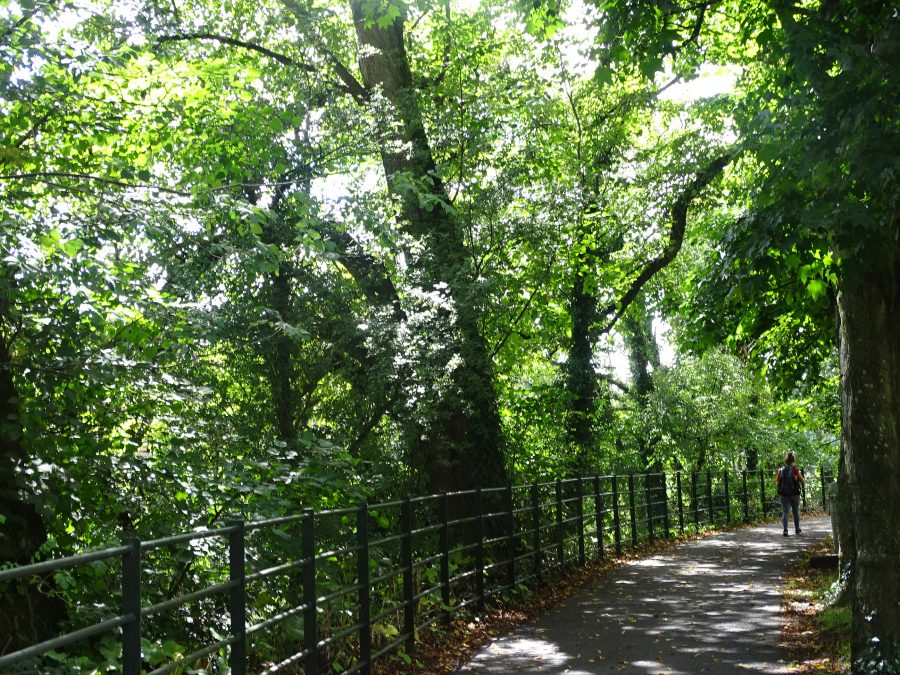
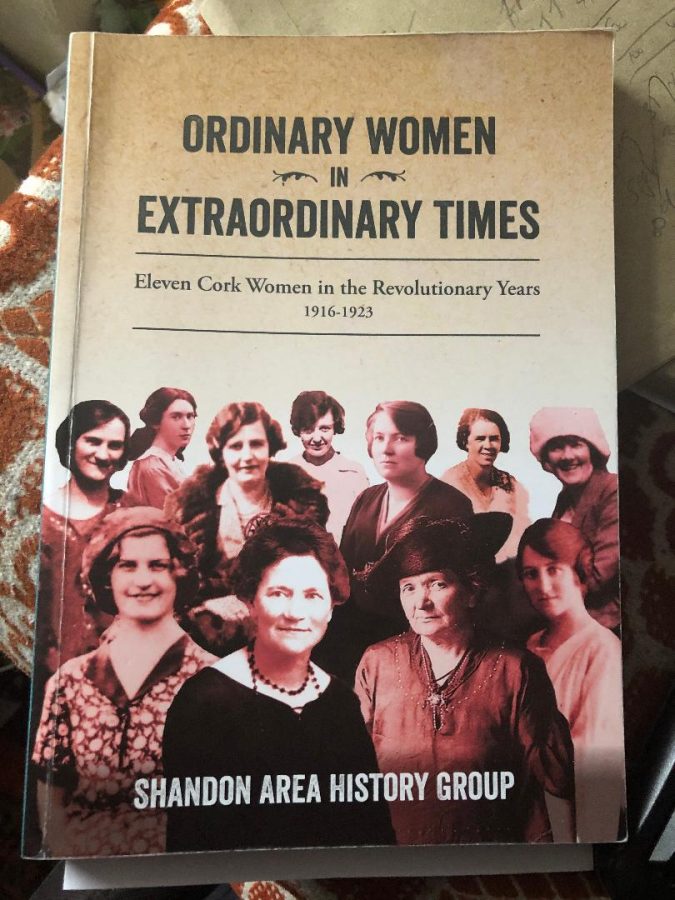
Mardyke Bridge:
The North Mall to Mardyke section of the Lee Walk was officially opened on 1 February 2006. The bridge is a single span construction made of steel and was designed by Fehily, Timoney & Gifford Architects. The Mardyke Bridge was manufactured off site with the finishing touches and assembly done on site, upon which it was lifted into position in a single operation.
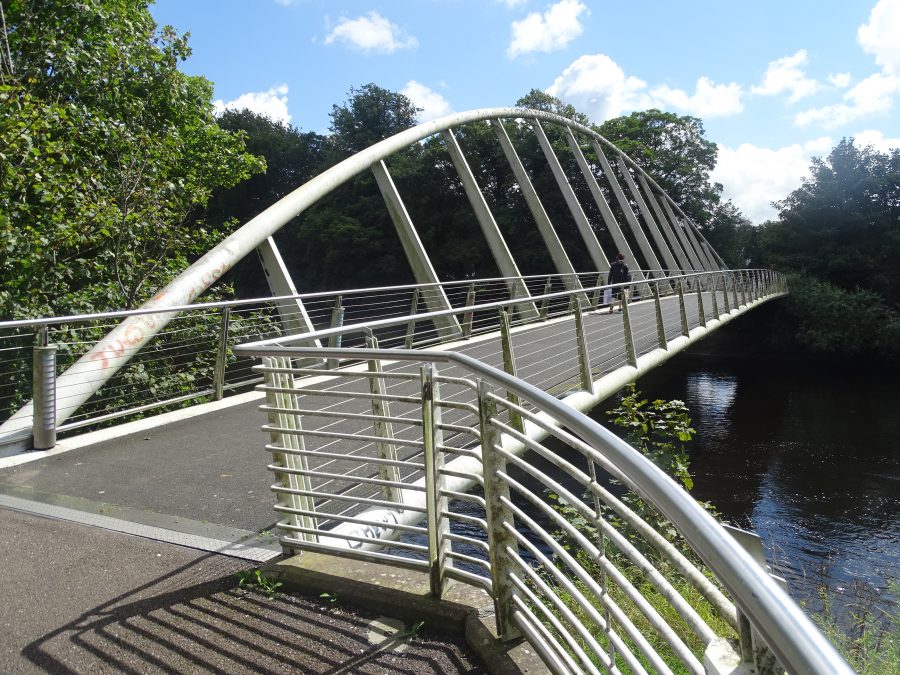
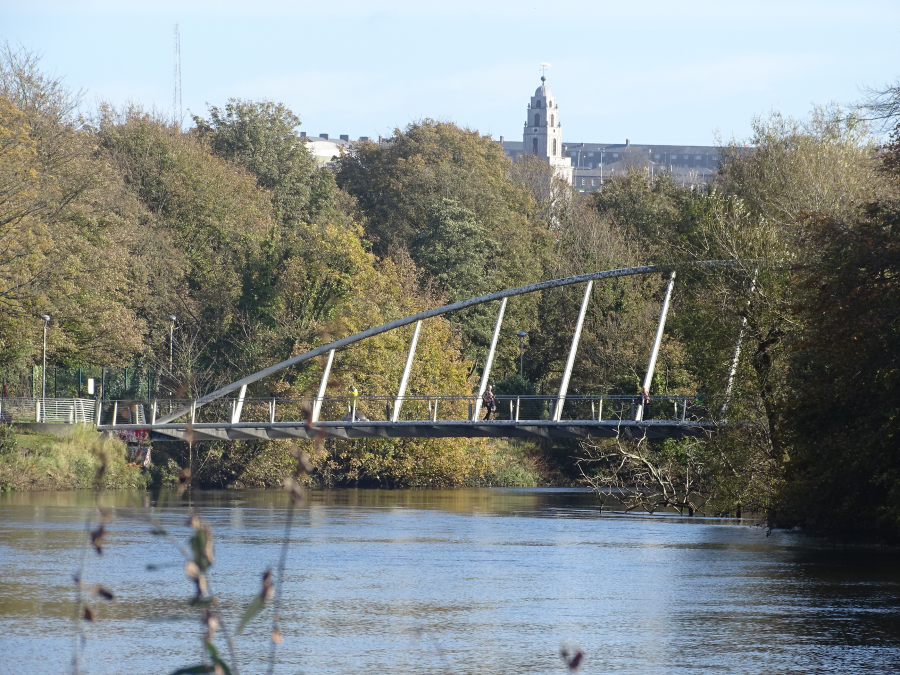
Band Field:
Bandfield is a site-specific artwork presented as part of the Mardyke 300 celebrations. The year 2019 coincided with the 300th anniversary of the construction of the public recreation area of the Mardyke in Cork city. To mark this unique moment in the city’s history, the Glucksman invited artist Deirdre Breen to create a large scale artwork at the site of the original bandstand in front of the UCC Ceremonial Gates on Western Road.
Bandfield is presented on the façade of a former ESB substation, one of many such modernist structures built between 1948-1951, and which is currently used as a bicycle shelter. The small building is directly adjacent to the place where the original Mardyke bandstand was located in the nineteenth century. As part of the design process, the artist worked with the Glucksman and local musical groups to identify musical patterns and shifts in the way we experience music in public spaces. Curated by Tadhg Crowley, the project involved the community participation of the Butter Exchange Band and Music Generation.
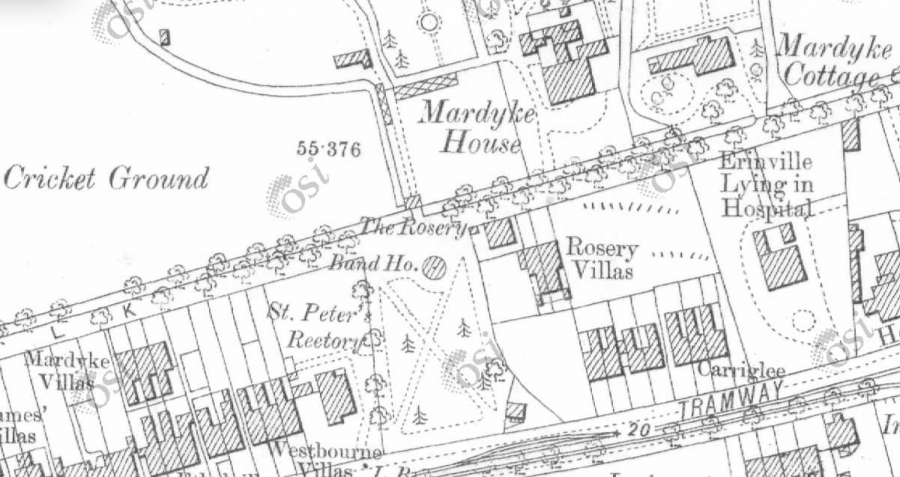
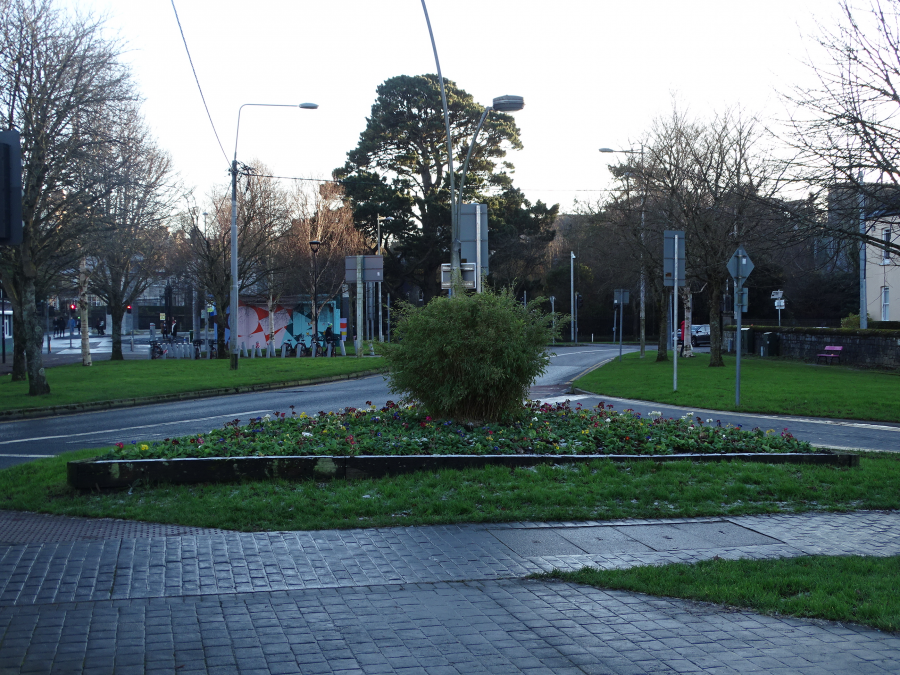

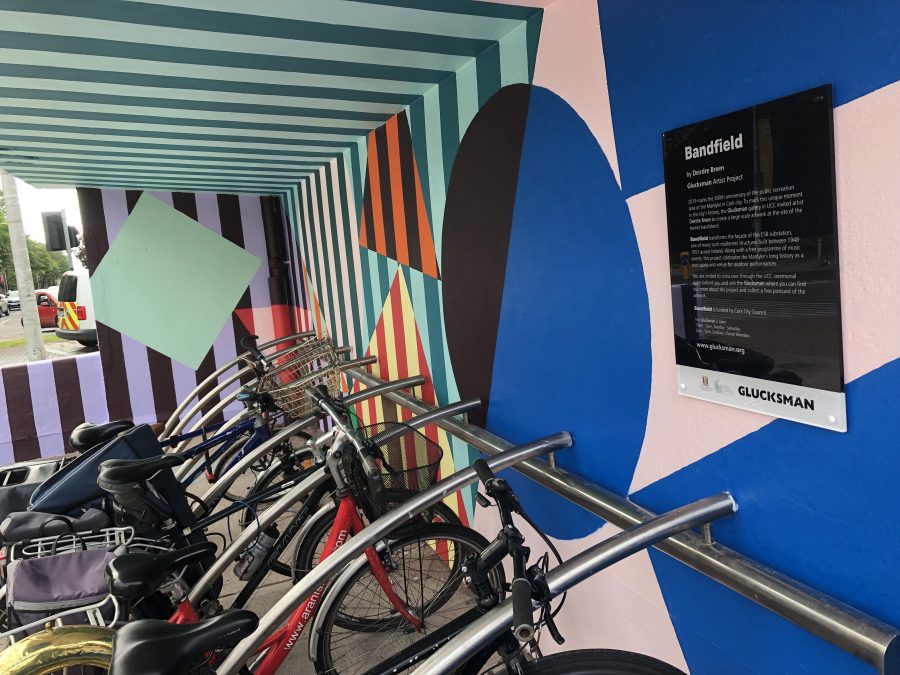
St Joseph’s School:
St Joseph’s school is a Detached seven-bay two-storey school, built 1913. One of a group of Presentation Brothers Schools in this area of Cork. It was intended to serve the school-going population of the Middle Parish. The first document outlining the history of the land is a conveyance dated 9 February, 1848. This conveyed the property from the (Church of Ireland) Ecclesiastical Commissioners of Ireland to William Horatio Crawford, one of the founders of the firm Beamish and Crawford. On 21 June, 1875The property was conveyed to the firm Beamish and Crawford, and to trustees of the Presentation Brothers on 11 December, 1912.
READ J Mathew Feheny’s article on the school’s history here: St. Joseph’s History | (wordpress.com)
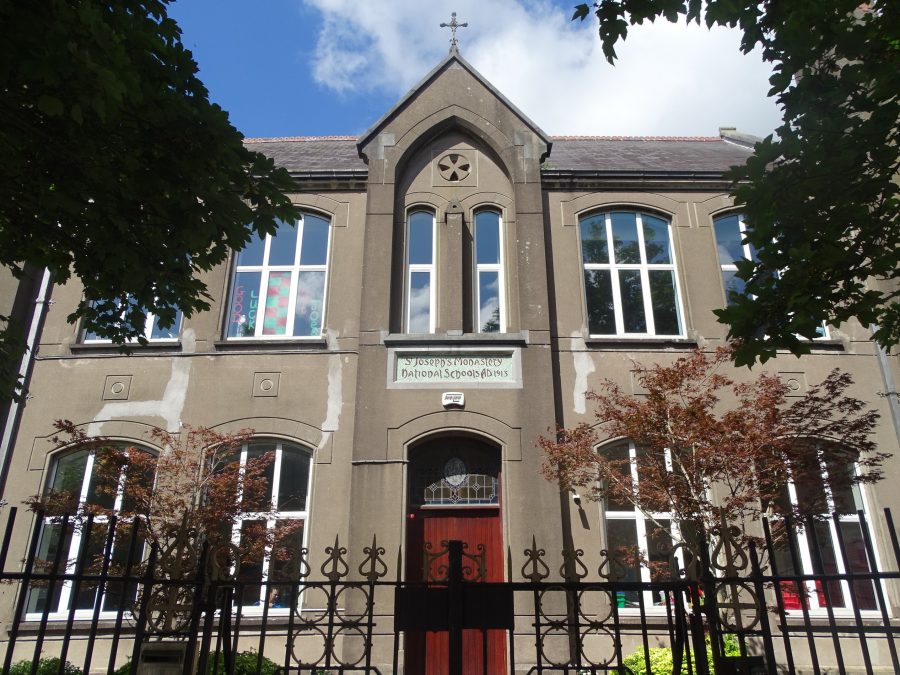
Presentation Brothers Secondary School:
The secondary school as founded by the Presentation Brothers in 1878, in the South Mall. It shortly afterwards moved to the Grand Parade. In 1887, the Presentation Brothers moved their school to a purpose-built facility on the Western Road and which straddled across its site to the Mardyke. The present school complex, was opened in 1985.
READ more here on the Presentation Brothers secondary school: Who we are — Presentation Brothers Cork (pbc-cork.ie)
The old site is now owned by UCC for its College of Arts, Celtic Studies & Social Sciences and also hosts on the site the purpose-built Granary Theatre. It shows new and experimental work by artists in theatre, dance, performance and live art.READ more here on the Presentation Brothers secondary school: Who we are — Presentation Brothers Cork (pbc-cork.ie)
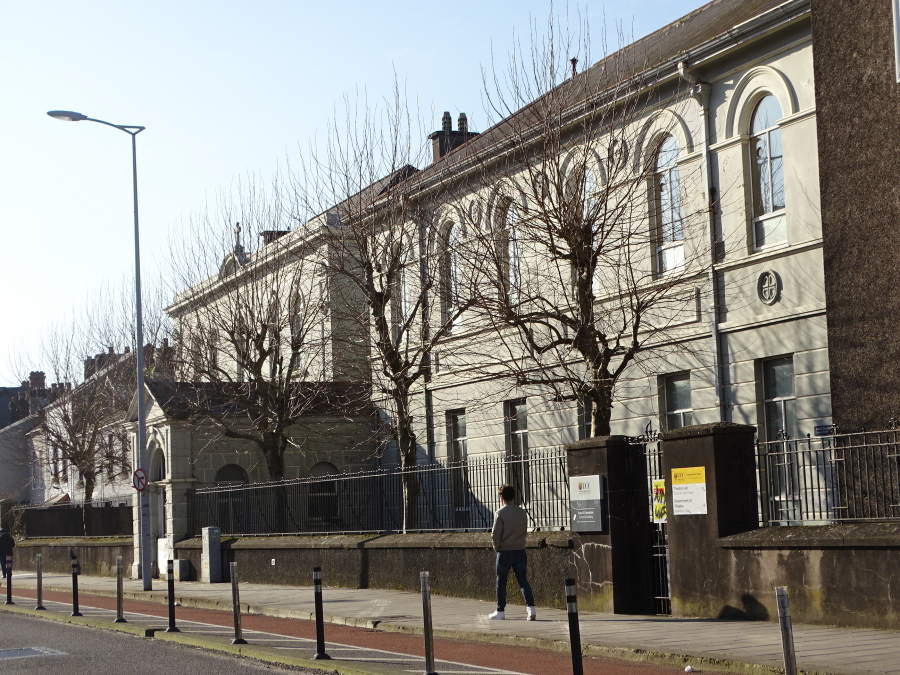


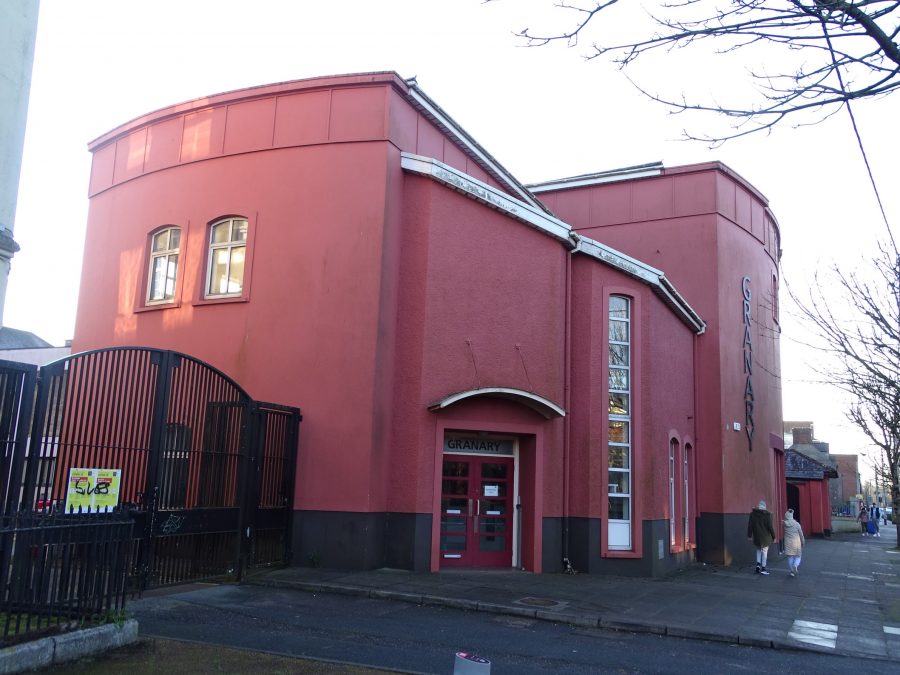
Explore UCC’s Department of Theatre at the former Old Presentation School and the Granary Theatre:
Constable’s Lodge House:
The old lodge from c,1840 played an important role in the policing of The Mardyke and the upholding of law and order. The Corporation of Cork employed a constable in the nineteenth century and well into the twentieth century. The Constable opened and closed the Mardyke Gate, one set of which were outside the lodge.
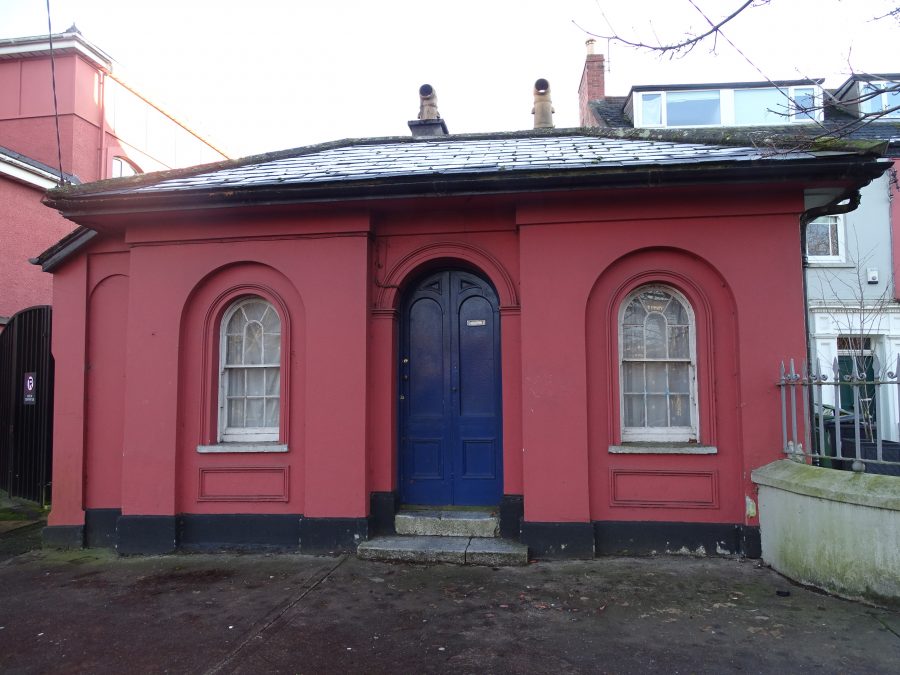
Erinville Hospital:
Erinville began its life called the “Lying-In Hospital”, which was established in 1798, at Hanover Street, Cork city, with eight beds, and served married women only — a ruling which lasted until well into the 20th century.
It was the efforts of Presbyterian Minister, Rev Thomas Dix Hincks, who wished to assist the impoverished of the city that Cork’s first “lying-in” hospital was opened. Through contacting the wives of wealthy families in the city, funds were collected to construct a hospital dealing with maternity cases.
It is thought the hospital relocated to 28 Nile Street (now Fenn’s Quay) in the earlier half of the nineteenth century, where it grew to 12 beds. In 1835, records show that 368 poor women availed of its services.
A South district Lying-in-Hospital, was established in 1837, for a similar purpose.
Henry and Coughlan’s Street Directory for 1867 records that the Hospital was entirely maintained by voluntary contributions, and annually relieved 600 poor married women. The affairs of the institution were under the direction of a committee of governesses, who inspect the hospital daily.
In 1898, the House of Erinville was purchased from the wealthy Perrot family of Hive Iron Works for £2,000. The new building accommodated 20 beds.
A new Erinville maternity hospital was constructed and opened in late December 1963.
By 2000, the Erinville offered 56 maternity beds and 17 neonatal cots and delivered just over 3,000 babies per annum.
In 2007, Erinville’s maternity services were subsumed into Cork University Maternity Hospital (CUMH). The site is still occupied by the HSE.
READ: For more information check out Alicia St Leger’s book, Born in Cork, in Cork City Library.

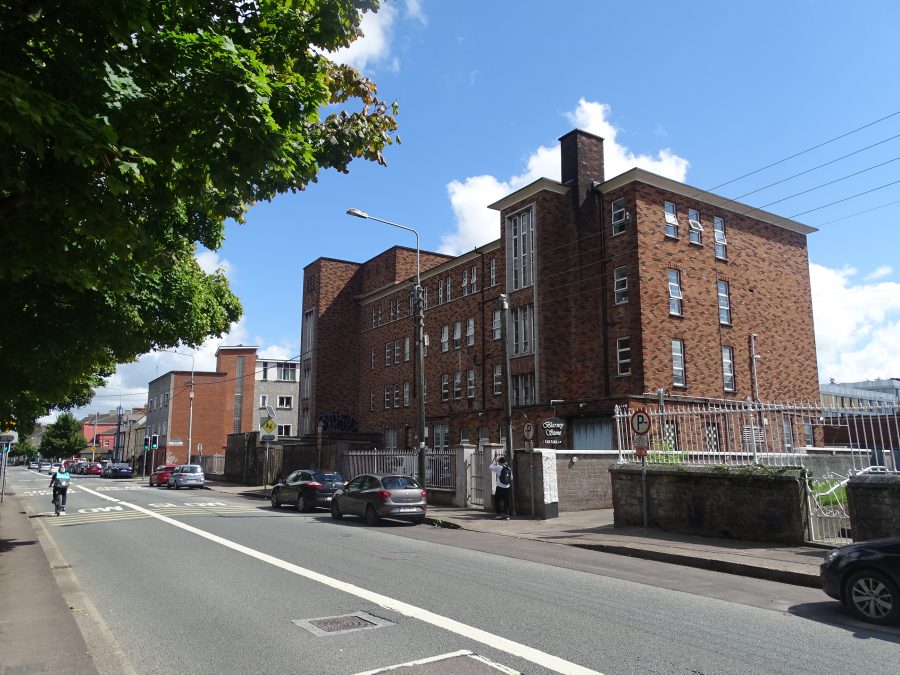
Lee Maltings:
The complex of buildings known as the Lee Maltings, now the home of the Tyndall National Institute, forms one of the most significant surviving industrial sites in Cork city dating back to the eighteenth century. The complex incorporates the original site of a flour mills, a brewery, a malting operation and related storage, residential and other facilities. The Lee Mills was the largest water-powered flour and corn milling installation to become established on the north channel of the River Lee.
In 1797 Atwell Hayes granted a lease to the western part of the lands to Joseph Reeves, on which the River Lee Porter Brewery was erected, and which operated until 1813. Beamish & Crawford (B&C) purchased the River Lee Porter Brewery in 1813. The greater part of the existing six and seven storey buildings were entirely rebuilt on the site of the original mills by Beamish and Crawford before 1831.
The Lee Maltings was purchased by UCC from B&C in 1968 and work commenced on converting the existing buildings for university laboratory and teaching use, as well as the provision of an indoor sports facility and the original location of the UCC Granary Theatre. It is now the home of the Tyndall National Institute, which specialises in ICT Hardware and Systems and operates globally to facilitate and enable R&D and innovation in Ireland consistent with national priorities.
Tyndall has built up extensive experience through working on space-related R&D projects for many years. Tyndall acts as a Microelectronics Technology Support Laboratory to the European Space Agency, under which it provides expertise & evaluation services to ESA in the areas of component & integrated circuit quality and reliability. Tyndall also conducts evaluations of new technologies, materials & assembly processes to assess their suitability for use in the space environment. In addition to its work with ESA, Tyndall also works directly with leading European & international space components companies.
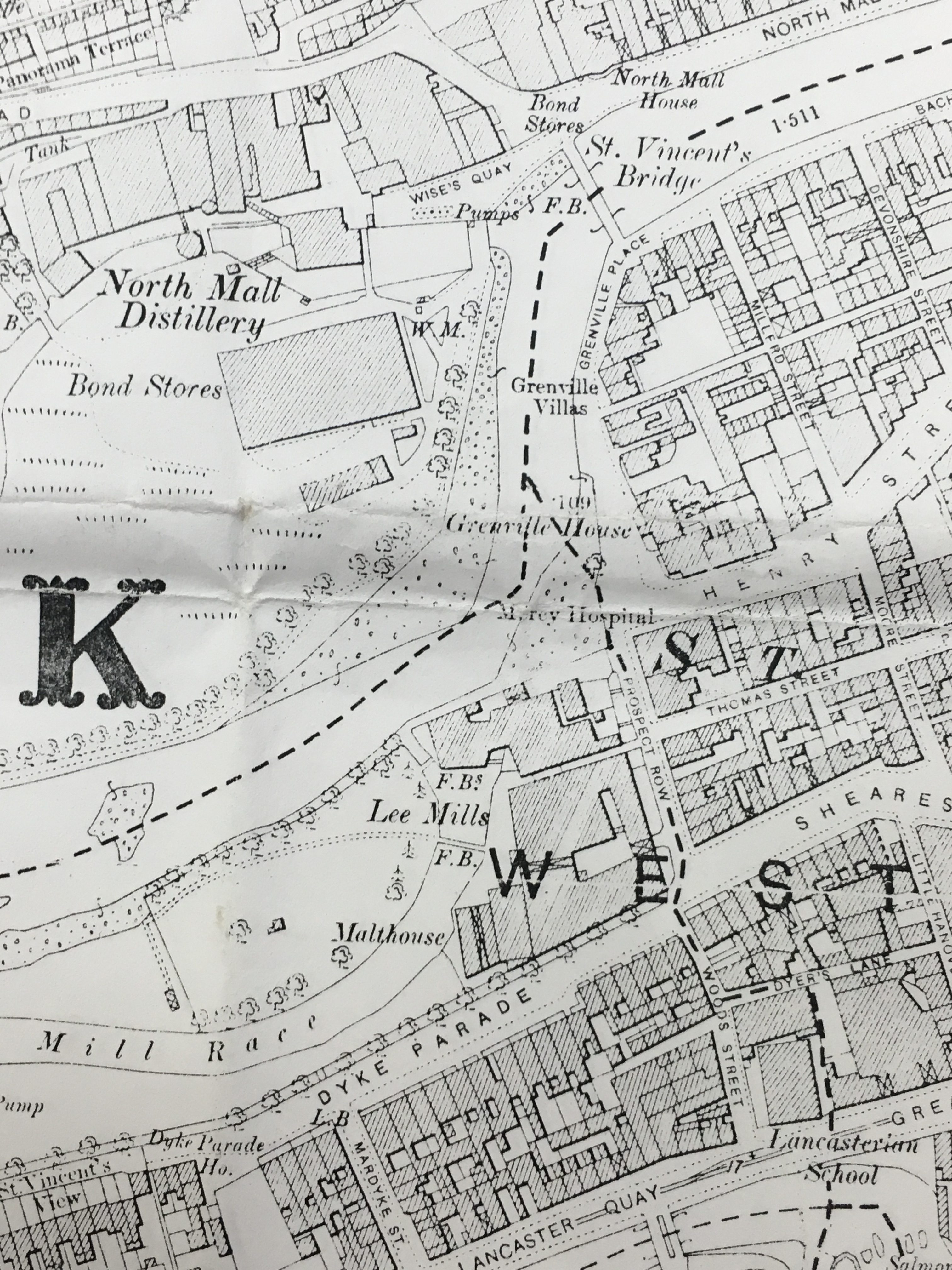

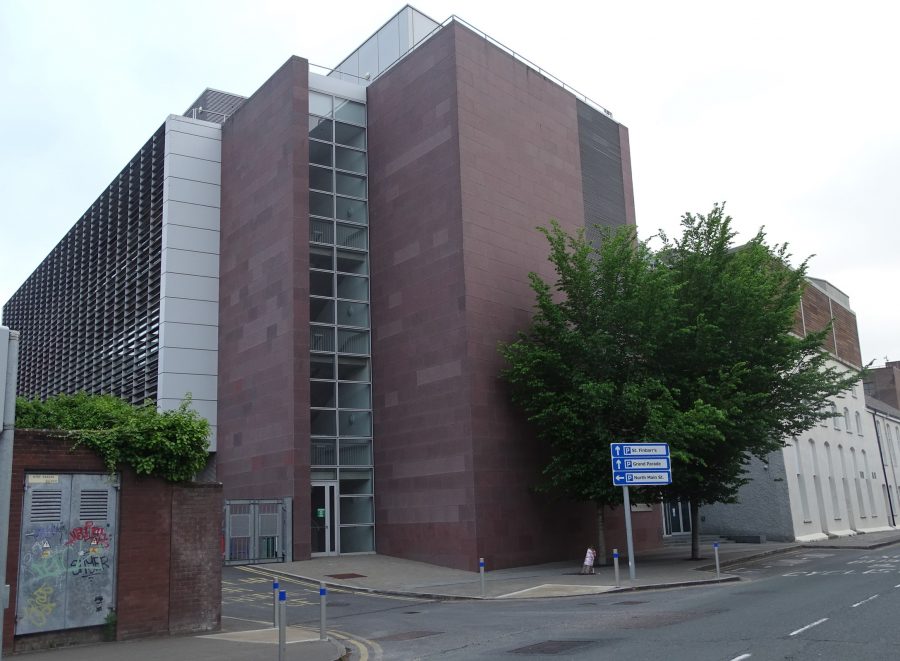
WATCH: Tyndall National Institute, University College Cork is one of Europe’s leading research centres, specialising in Information Communications Technology research, with ca 450 staff, students and academic & industrial visiting researchers. Tyndall undertakes internationally-leading research addressing key challenges in the areas of Communications, Energy, Health and the Environment.
Volunteer Hall, Sheares Street:
In February 1915, the leadership of the Cork Brigade of Irish Volunteers signed a lease on a large building at Sheares Street for use as a headquarters. Tomás MacCurtain was the Brigade Commander Unlike their old headquarters on Fisher Street, the building had a sufficient number of rooms to allow concurrent activities such as arms drill, map reading and first aid classes to take place on days when training was conducted on the premises.
On Easter Sunday morning, 23 April 1916, 163 Volunteers from the Cork City Battalion, together with others from Cobh and Dungourney, paraded under arms outside of the Volunteer Hall prepared to take part in the manoeuvres that were a cover for the Rising planned to establish an independent Irish Republic. After an address by Brigade Commandant, Tomás MacCurtain, they marched off to Capwell Railway Station to board a train for Crookstown. However, just as they were departing, an order arrived from Dublin cancelling the operation. This was the latest in a series of conflicting orders that had been received by MacCurtain during the previous week.
That day, 23 April, just over members of the Cork Brigade mobilised and assembled at eight designated concentration camps throughout the county. But, when he received the latest order, MacCurtain felt he had no choice but to stand his men down and order them to return home. When Tomás MacCurtain returned to the Volunteer Hall on Easter Monday evening he learned that the rising had commenced in Dublin. As his men had dispersed and the element of surprise had been lost, he decided that it was too late to join the fighting and that his best course of action would be to defend the Volunteers against the British Army.
Negotiations between both parties mediated by the Lord Mayor of Cork, Cllr Thomas C Butterfield and Assistant Bishop Cohalan eventually led to a peaceful settlement. The deal involved the Irish Volunteers agreeing to hand over their guns on the understanding they would be returned at a later date in return for being allowed to return home but MacCurtain was arrested and detained in Frongoch internment camp in Wales along with those who fought in Dublin.
READ: For more information, check out the information boards by Cork Public Museum opposite the building.
READ: Kieran’s articles on Life in 1916 in Cork, 2016 Remembering 1916 | Cork Heritage
READ: Military historian Gerry White’s Irish Examiner article (and book), A week of order, counter order, and disorder in Cork (irishexaminer.com)
